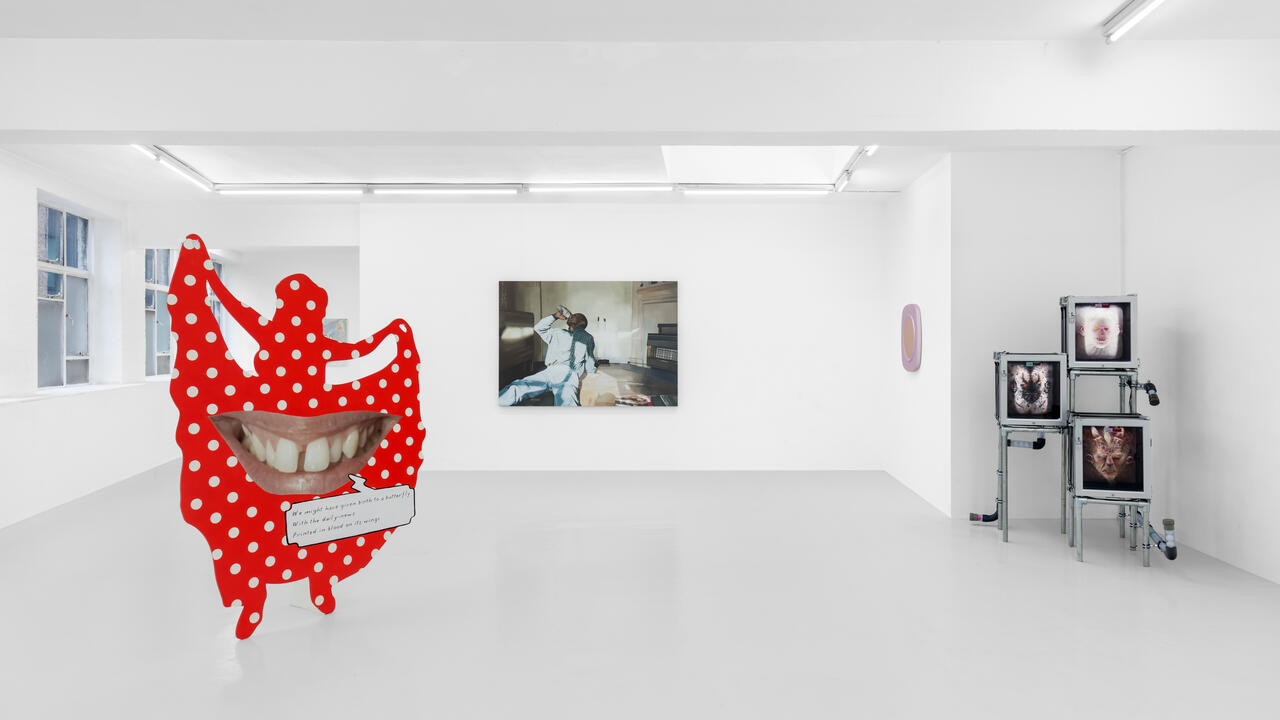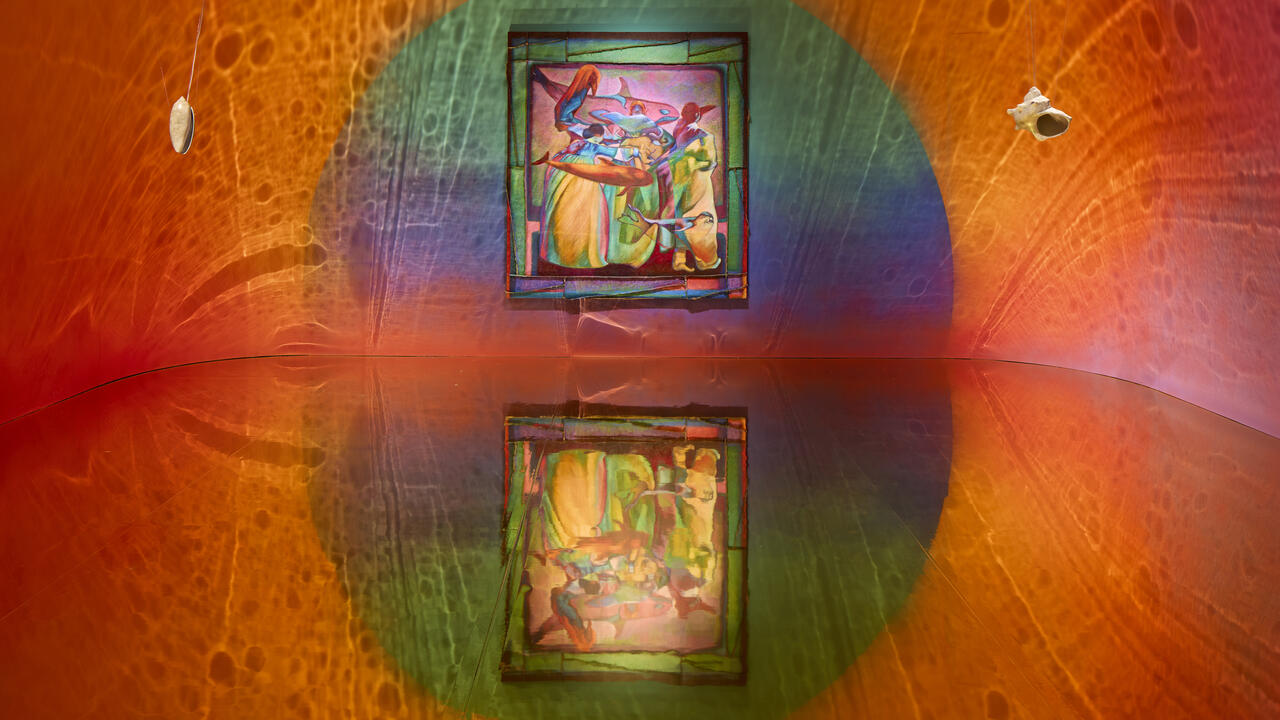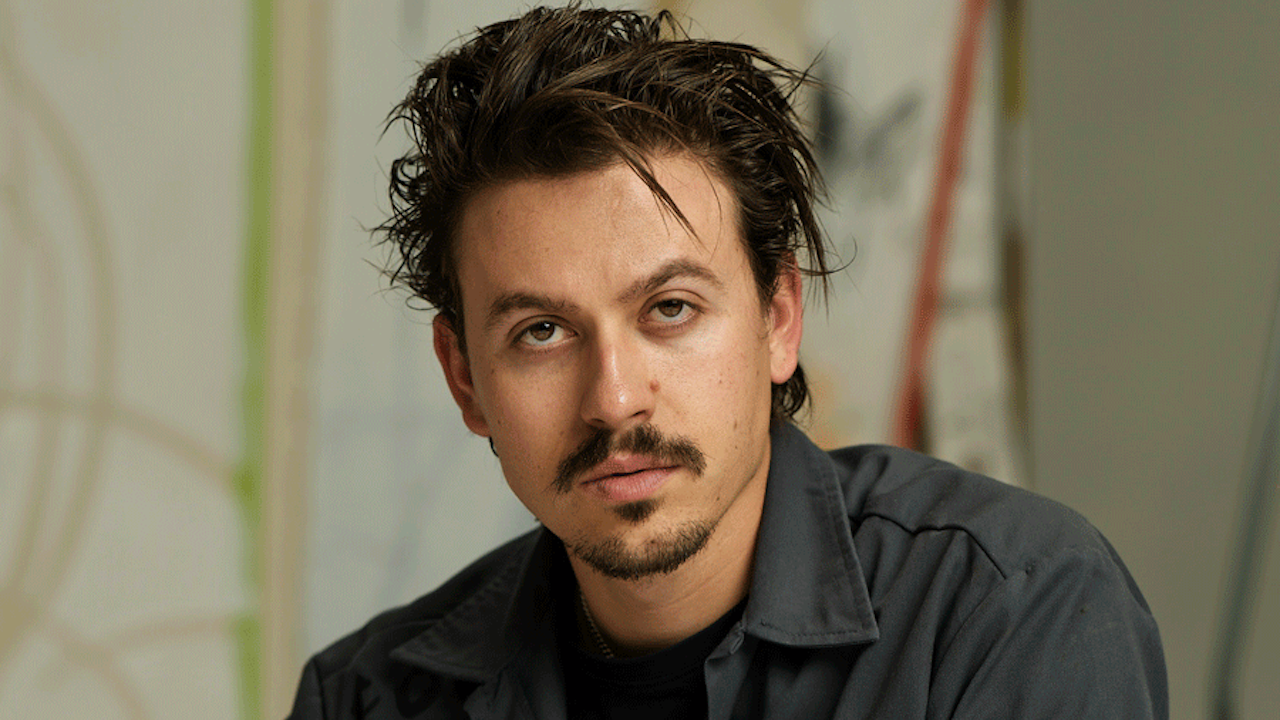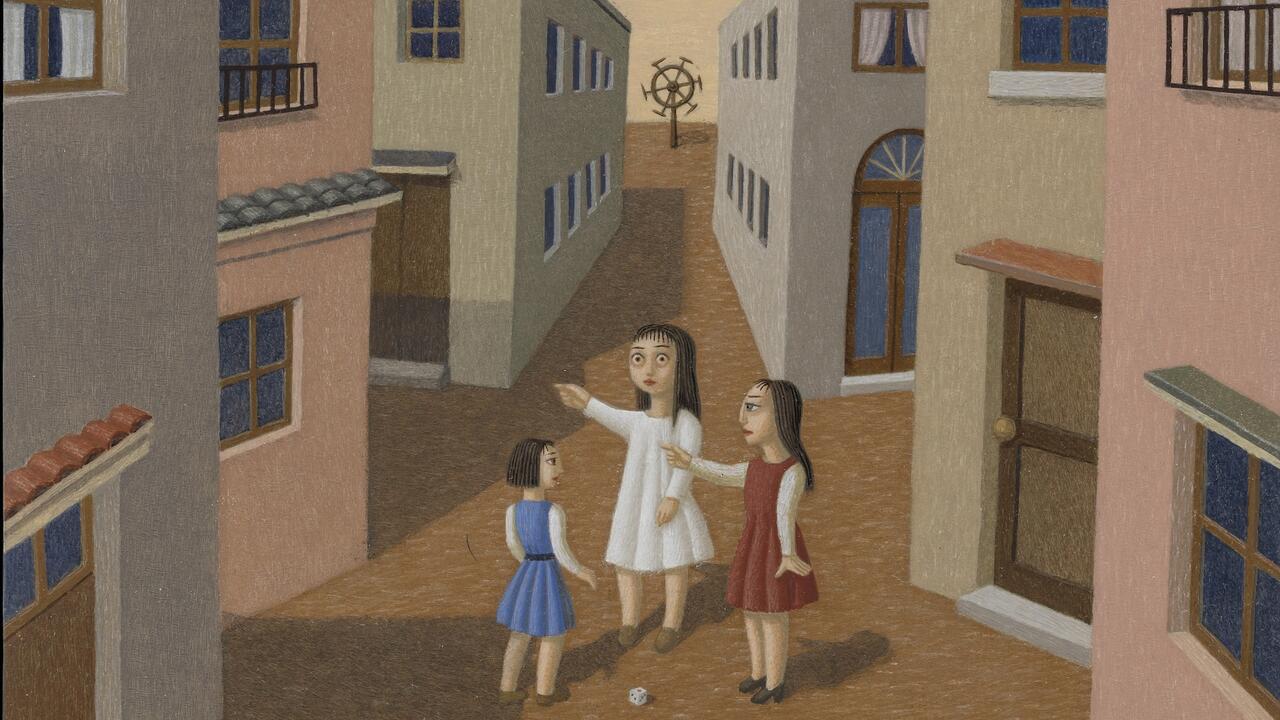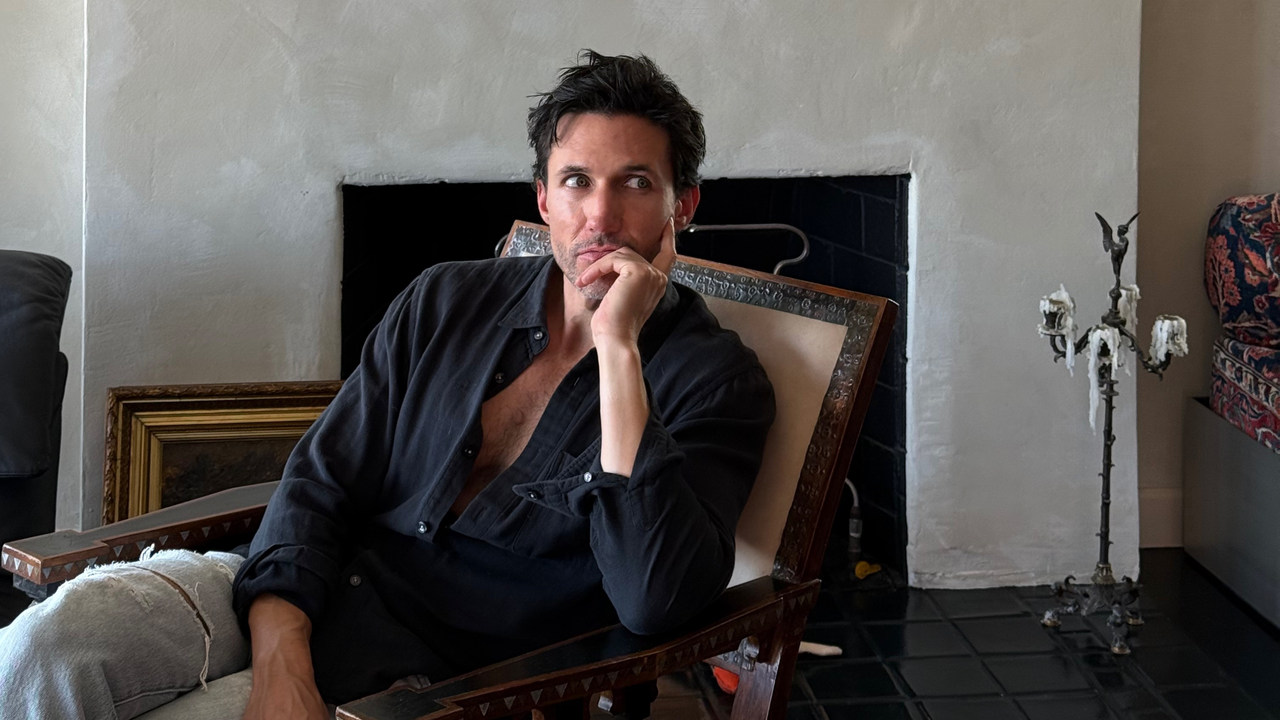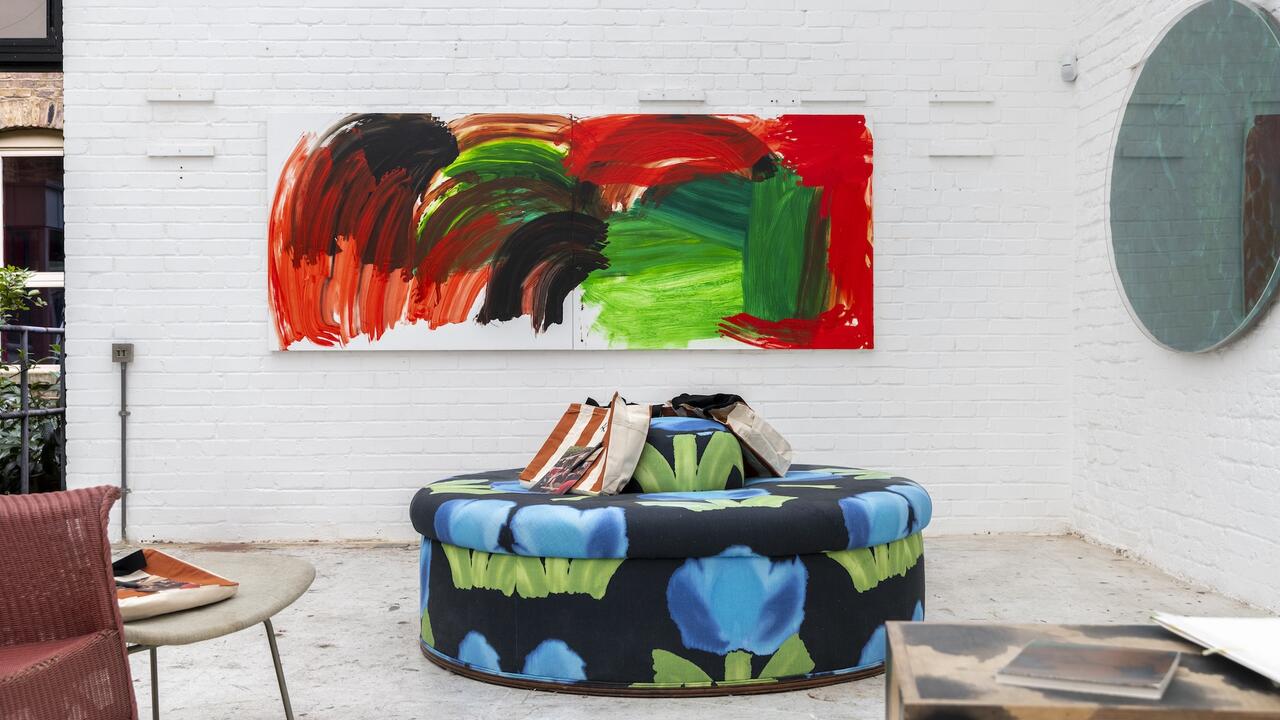Rachel Doesn’t Live Here Anymore
On Rachel Whiteread’s House (1993)
On Rachel Whiteread’s House (1993)
‘You know what I think?’ The cabby who picked us up on Roman Road said, in perfect imitation of one of Michael Heath’s ‘Great Bores of Today’ cartoons in Private Eye, ‘When I first saw it I thought it was bloody horrible but I had that Lord Renfrew the famous archeologist in the back of the cab the other day and I said you know what that is I said it’s the Stonehenge of Bow that’s what it is and I’ve had Americans in the cab come over ‘specially if Tower Hamlets puts a turnstile on the park and sets up a tea-stall they should sell souvenirs....that bloke from the council whatsisname Flounders what sort of a name is that he wants to pull it down he’s a bleedin’ nutter good luck to her I say....’
The papers usually feature a photograph of the artist herself, kitted out in a boiler suit and work boots, perched on the steps leading up to the front door of 193 Grove Road, Bow. Or, rather, not 193 Grove Road, but its double, its negative, a solid cast taken from the empty interior spaces of the house, the fabric of which has been chipped-away to reveal the solidified spaces within.
Some people still imagine that Rachel Whiteread sculpted this house in her studio, chiselling away at a block of stone the way Michaelangelo hacked away at a marble rock, and transported the whole thing to this unprepossessing patch of grass down by the canal in the East End. Others, realising that the work is a cast, imagine that Whiteread poured liquid concrete down the chimneys, waited for it to harden, then hacked the brickwork shell away. Or maybe she squirted the cement in through the letterbox, or removed the roof, and shovelled it in that way....
Right now, Whiteread is the most famous artist in Britain. The first woman to win the Turner Prize, she has had the K Foundation award of £40,000 foisted upon her and her face has been - in her words - ‘plastered all over the papers.’ Spitting Image has turned her into a latex dummy, and she’s hit the front page: The Daily Telegraph has called her ‘a very good egg indeed’ and she has been the subject of leader columns, articles, cartoons and a lengthy correspondence in the letter pages of The Independent. She has excited the attention of comedians, political columnists and cab drivers; she has turned Tower Hamlets Council into a laughing stock, she’s stopped the traffic in East London and has questions asked about her in the House of Commons. The chairman of Arts Council has tried to put a Preservation Order on her work and the story of Untitled (House) (1993) has been repeated in the media throughout the world.
It was once a modest terraced house in a somewhat depressed area of the East End. The street was due for demolition when Whiteread, in conjunction with the commissioning body Artangel, and with the permission of the local council, took over the last remaining empty house and turned it into a mould for a sculpture. The sculpture was supposed to stand for three months and then be demolished, cleared away, and the site turfed over. Yet House, a modest enough proposal and a logical development of Whiteread’s earlier work, has entered the public’s imagination in a way that even the artist could not have anticipated.
Whiteread seems a bit bemused by the attention that House has received, and isn’t entirely sure why it should have become such a focus of attention. ‘I knew it would be controversial, but I had no idea how controversial. People seem completely involved in it, and come from all over Britain and beyond to see it. I can’t come to terms with the way people are flocking there.’ She gets letters from people who’ve seen the work: retired army officers, nurses, ordinary people, art lovers and loonies. There’s a man who even addresses his letters to the house itself, a house that no longer exists. The Post Office knows where to forward these letters, just as it knows exactly where to redirect the letters children address, care of the North Pole, to Father Christmas, I overheard someone remark that being near the work made them feel like they were on the Moon.
Every day large crowds gather, climb the front steps to the sealed door, or wander round the base of the work, touching the walls, kneeling to peer at details - the exposed, rounded, soot-stained bulges which were once fireplaces, the lintels, the blank windows. People bring their children, some set up camcorders or take photographs of the house, while others just stand back, silently looking. Poems have been posted on a wall beside the work, complete strangers strike up animated conversations, and there’s a strange atmosphere somewhere between the festive and the reverential. ‘We’re not all arty types you know’ I heard one woman say: and it’s true, the visitors appear to come from all walks of life, and all ages. The aptly named Roman Road has become the Camino Way, a Via Appia, by way of Bethnal Green, the number 8 bus route and Mile End tube station. It’s weird. You half expect someone to set up a stall selling plastic relics, house-shaped plaster paper weights, postcards and t-shirts.
Whiteread, meanwhile, keeps a low profile. When she visits House she stays in her car - because her face has become so familiar she finds herself doing endless photo-calls ifshe makes her presence known. ‘I find being there quite traumatic’, she says, ‘but I often sit in the car and watch people looking at it. I’d love to be invisible and just stand there for a day.’ And what would Whiteread hear, if she could invisibly eavesdrop, like one of Wim Wenders’ angels? The muttering of memories, thoughts about home, transience and dislocation; silent echoes ringing on the blank walls.
‘I hate all that cliched humanistic stuff’ an artworld celeb spat, when we discussed the work. But it seems that it is precisely all that humanistic stuff, rather than hype or notoriety, that has drawn people to see Whiteread’s work and has elicited such strong calls for its preservation. A vituperative local Councillor, Eric Flounders, has led a call for the work’s immediate demolition, calling it an ‘excrescence’, and has stated that it wins favour only from the the ‘Hampstead arty crowd’ rather than from local people. He has also bizarrely suggested that the work might be suitable for a place like Welwyn Garden City, but not for Bow. Flounders happily describes himself as ‘a nasty little cynic’, and his role in SDP dirty tricks against the local Labour Party, leading, by default, to the election of a neo-Fascist British National Party councillor in a predominantly Bangladeshi ward, remains murky.
Flounders has become the villain of the piece - The Philistine. He seems to almost relish the role. Without him House may not have provoked such an avalanche of comment, and has certainly served to dramatise the final condition of the work itself: that it should be demolished. House was only ever intended to be a temporary monument, and its ultimate disappearance will be an act of completion. That this stack of sealed rooms, perched one upon another should itself be turned into a memory seems fitting. It is an idea which, for a protracted moment, enters the world of things, and then is gone. ‘House’, she said, ‘is to do with memory and ultimately it will become just that.’
‘House makes a point about the smallness and fragility of the spaces we actually live in, worry about, decorate....all those things that are part of life.’ An essentially hidden, private space has, by an act of inversion, become a physical, public expression. What, finally, has been exposed is an empty setting, a place where people once led a life of intimacies, grew up, grew old and died. And, one might add, fucked, rowed, worried, slept, ate, shat, fought, laughed and lied. No one looks out of the windows any more, no one puts out the milk bottles on the stoop; no one shouts ‘Kevin comein you tea’s ready’ or returns home late from the pub and fumbles with the keys to the lock: no one, not even Rachel, lives here any more. House is a dead space.
From her early wardrobe casts and the works which focused on the spaces beneath beds, dressing tables and cupboards (often working with the depressing Utility furniture of the post-war period), to the inumerable casts of mattresses, the bath and sink pieces, and the construction, first of Ghost, a single room from a derelict Victorian house, and House itself, Whiteread has always worked with a kind of forbidden territory, the space where the mundane is transformed into something fantastic and alien. It reminds us of what childhood was like, a place full of abstract fears and longings. ‘There are always scary places, like the space under the bed or inside the wardrobe or the space in the angle between an open door and the wall. These places are scary but also slightly erotic - secret, hidden. The stuff you don't really know about at that age....’
Thoughts of sex and death hover around her work like flies around a piece of meat. People talk of the works as sarcophagi or tombs, and more than one commentator has described House as a cenotaph. The mattress sculptures, some of which are made from what she has called ‘urine-coloured’ resin or rubber, invite speculations about activities that have or might be performed on them. But what they most strongly evoke is a profound absence. They mark the passage of departed bodies. Does she think about death a lot? ‘Of course I do, but not more than anyone else. I’ve had sad losses in my life, but so have most of us,’ she replied, but later remarked, ‘A lot of my earlier works were a kind of exorcism - that’s something Louise Bourgeois talks about: her life being a constant, unending exorcism. That’s what I love about her work. She doesn’t stop, and doesn’t make judgements about what she does. I think that the reason she can do that is she is so old, and worked away for years, unacknowledged.’
‘When I was a student I made a lot of strange body casts - the cast of my back, which I then turned into a shovel; two pieces using my legs, where I tied myself up in a kind of crouching position, cast my legs and turned the whole thing upside-down and covered it with stair-carpet and it ended up almost like a heart...another work where I cast my own legs alongside someone else’s. But even the works which come from furniture or architecture are human, and derive from our proportions, our scale and human function. Everything I do relates to the body - the bed is the right size for the body, and so is a chair, a bath, and even a wardrobe or a house.’ Everything is the right size for the body, but there aren’t any bodies.
Untitled (Room) 1993, which Whiteread constructed at the Tate Gallery was, unlike most of her work, cast from elements chosen and put together by Whiteread herself. The room is an invention, rather than a replica. She made it in Berlin, and some thought it referred to housing conditions for ‘guestworkers’ in the city, yet it aspires to generic condition. It could, she says, be a room anywhere in the world. ‘I wanted to make something fundamentally dull and basic. People ask “where's the human touch?” but of course it's in the making of it.’ MP Gerald Kaufman said it gave him the creeps. ‘I rather like that,’ she said.
‘When I was making Ghost I gave a lecture on the work and a member of the audience got very annoyed about the fact that I’d filled in the keyhole to the door of the room. I said I had to. He asked “what do you men you had to?” Well, if I'd left it I'd have had to cast the next room, then the next room, then the space outside the front door, then....it would have been an infinite process, til the whole world would have been covered by a cast, going down all the valleys, into all the crevices, round the trees. You’d end up with an inside-out, life-size replica of the world.’
It seems a bleak and purgatorial vision, this endless cataloguing of the dismal and the ordinary. Where will it end? ‘I get very annoyed when people ask me what I am going to do next. I've gone through a process over the past few years, and kept going because I felt like I hadn’t explored things. When I was making the bed pieces I’d walk down the street and see another abandoned mattress and think - I've got to make another one. My work is a kind of language for everyone.’
By the time you read this, House may well be rubble, ploughed back into the ground to make way for a patch of rancid grass, decorated with dog turds. ‘I’ll be very sad to see the work demolished, I think it needs to be seen, and that takes time. I don’t feel that I’ve seen the work myself yet - I’m too close, too involved with it. A part of me would like it to remain for the time it takes to become invisible - so you pass by and shrug. But that won't happen...ideally I’d like it to remain until the crowds stop flocking, and it's just there.’









